Hey there,
I'm Judith, a Digital Marketing Specialist with experience handling Dental and RTO Clients, mainly in real estate, education, construction, retail, loans, hospitality, fitness and small businesses. I have a strong driven project management skill, reporting, digital strategy, and client relationship management. I also have extensive experience in Ads Manager on Facebook, TikTok, Snapchat and Google to analyse trends in different businesses.
On top of that, I also have proven experience in creating automation using GoHighLevel, Active Campaign & Zapier.


Software Skills






Ads Portfolio
Real Estate Sector



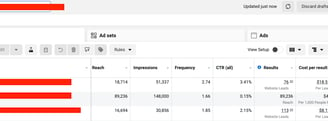

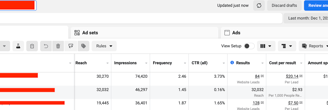
Campaign Structure:
The client's campaigns are organized based on the various lead magnets they offer. Lead magnets are incentives or valuable offerings designed to attract potential customers.
Additionally, a "Know, Like & Trust" campaign relies on organic postings from the client's page. This campaign aims to introduce the brand to new audiences.
Lead Magnet Landing Pages:
Landing pages for each lead magnet are created using Clickfunnels. Clickfunnels is a platform for building sales funnels and landing pages, often used in digital marketing.
Lead Tracking:
Leads generated through the campaigns are recorded in Clickfunnels. Clickfunnels likely provides a user-friendly way to capture and manage leads.
Automation in Active Campaign:
The leads are then pushed through Active Campaign, a comprehensive marketing automation tool.
Active Campaign is used to manage leads and automate processes. The automation is tailored to specific ad categories based on the source of the audience.
Ad Category Automation:
Automation in Active Campaign likely involves categorizing leads based on where the audience originated. This allows for more targeted and personalised marketing efforts.
Remarkable Results:
The performance metrics mentioned include an impressive $18 and $8 per lead for the last three months of 2023, with even better results in December. This indicates a cost-effective lead acquisition strategy.
December Success:
Specifically highlighting better results in December suggests that the strategies implemented during that month were particularly successful. This could be attributed to seasonal promotions, improved targeting, or other optimisations.
In summary, the marketing strategy involves leveraging lead magnets, organic content, landing pages, and marketing automation tools (Clickfunnels and Active Campaign) to efficiently attract, manage, and convert leads. The remarkable cost per lead figures indicate the effectiveness of the implemented strategies, and the December success suggests adaptability and responsiveness to market dynamics.
Loans Sector




Geographic Targeting:
The client's target audience is segmented into two regions: the UK and AU (Australia).
Two ads are created for each region, both optimized for generating leads. This includes one ad with video creativity and another with image creativity for each country.
Remarketing Campaigns:
Additionally, each region has a remarketing campaign designed as a Reach campaign. Remarketing aims to re-engage individuals who have previously interacted with the brand or its content.
Lead Generation Source:
Leads in this campaign are generated from Unbounce pages. Unbounce is likely used to create landing pages optimized for lead capture.
Lead Tracking:
The leads from Unbounce pages are then pushed through Active Campaign, a marketing automation tool, and a Google Sheet. This dual-tracking system allows for easy management and verification of the true source of leads.
Active Campaign Pipeline:
In Active Campaign, leads are managed through a specific pipeline. The pipeline is likely designed to guide leads through predefined stages or actions, customised based on the country of origin.
Results:
The campaign has delivered impressive results, with cost per lead figures mentioned: $17, $4, and $9. These figures indicate the cost of acquiring a single lead in each region.
In summary, the marketing strategy involves tailored lead generation ads for both the UK and AU, a remarketing campaign for each region, utilization of Unbounce pages for lead capture, and a dual tracking system through Active Campaign and a Google Sheet. The Active Campaign pipeline manages leads based on their country of origin. The reported cost-per-lead figures suggest that the campaign has been successful, achieving cost-effective lead acquisition in both regions.
Fitness Sector




Course Offerings:
The client offers two courses, and the marketing strategy is designed around promoting these courses.
Ad Campaign Structure:
There are two types of ads created:
One campaign for each course includes a specific offer related to the courses.
One campaign for each course does not include any particular offer
Remarketing Campaign:
A separate campaign is dedicated to remarketing. This campaign targets individuals who have engaged with the website and social media. All running ads are remarketed to this audience to re-engage potential leads.
Lead Generation Source:
Leads in this campaign are generated from Unbounce pages, which are likely optimized for lead capture.
Lead Tracking:
Leads from Unbounce pages are pushed through a CRM (Customer Relationship Management system) and a Google Sheet. This dual-tracking system facilitates easy management and verification of the trustworthy source of leads.
CRM Management:
The CRM is used to monitor enrolments in both courses. This is crucial for assessing the campaign's effectiveness in lead conversion to actual course enrolments, especially considering the high price point of the courses.
Results:
The reported results highlight successful performance in the last two months of the year, with cost-per-lead figures mentioned as $20 and $50.
The budget allocation is adjusted based on performance, with more budget directed towards the campaign that is performing better. This adaptive approach ensures efficient use of resources and maximizes return on investment.
In summary, the marketing strategy involves a combination of targeted and generic ads for course promotion, a dedicated remarketing campaign, lead generation through Unbounce pages, and a comprehensive tracking system using a CRM and Google Sheet. The focus on tracking enrolments in the CRM reflects a strategic emphasis on assessing the campaign's impact on actual course sign-ups. The adaptive budget allocation based on performance optimises the overall campaign effectiveness.
Education Sector
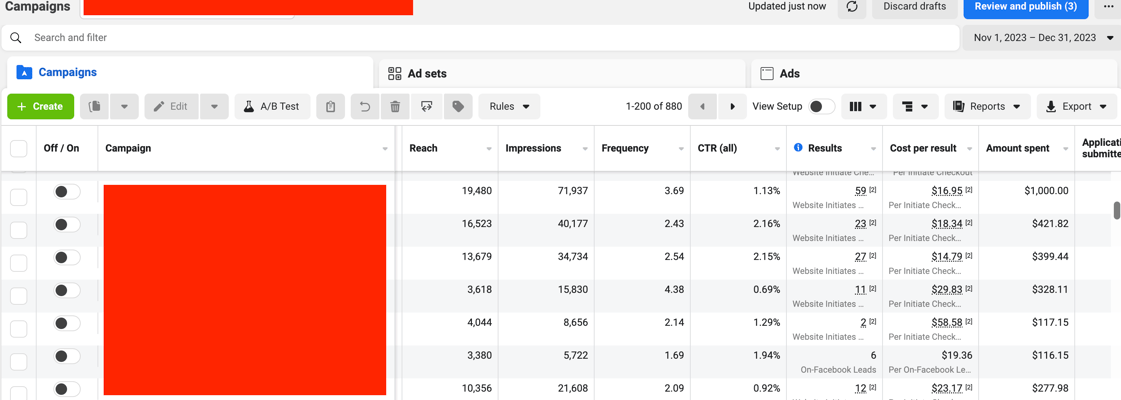

Geographic Targeting and Course Offerings:
The client is focused solely on the Australian market, and they offer a variety of courses within the education sector.
Budget Allocation and Campaign Schedules:
Each course has its allocated budget, and campaigns are not running continuously. The campaigns are scheduled around enrollment dates and pre-enrollment periods. This reflects an understanding of the education sector's dynamics, where there are specific times when potential students are more likely to engage.
Audience Monitoring and Checkout Tracking:
The client's campaigns are structured to monitor audiences that have proceeded to the checkout stage in the client's system. This indicates a focus on individuals already in the buying stage, signalling a targeted approach toward converting interested leads.
Cost per Lead (CPL) Metrics:
A benchmark for a great CPL in this campaign is set at less than $30, indicating a target for cost-effective lead acquisition.
Adaptability and Changes in Campaigns:
Not all courses perform equally well, as audience preferences vary. The strategy involves monitoring CPL for each course, and if specific courses show higher CPL, adjustments are made within the campaigns. This adaptability ensures ongoing optimization and cost efficiency.
Performance in Last Two Months and Recent Changes:
The last two months of the previous year were successful for most campaigns except for one. Changes were made to the targeting strategy to address the underperforming campaign.
As of January 2024, the CPL for the problematic campaign has been brought down to $28 per lead, showcasing the effectiveness of the adjustments made.
In summary, the marketing strategy involves careful budget allocation, consideration of enrollment schedules, tracking audiences in the buying stage, setting CPL benchmarks, and adapting campaigns based on course performance. The ability to make changes and optimize targeting, as evidenced by the successful adjustments in January 2024, demonstrates a proactive approach to campaign management and ongoing success in the education sector.
Automations Portfolio
Fitness Sector Automation
For this specific client, we're using a landing page and then pushing the lead through ZAPIER to push it through Hubspot (CRM) and a Google Sheet for lead management and source of truth.
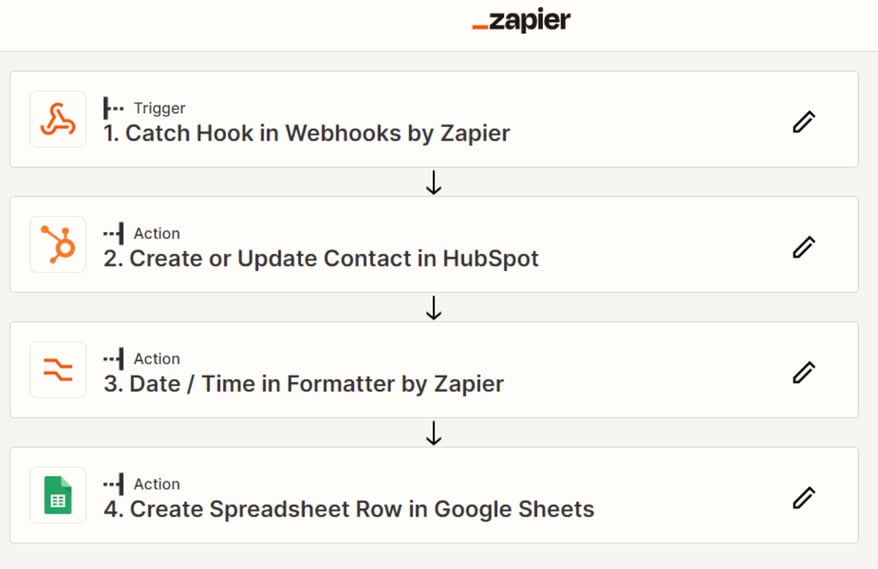

Construction Sector Automation
For this specific client, all leads submitted a form, and then we created an automation segmenting them per course, send notifications to the salesperson and finally push the lead into ZAPIER to push it to a Google sheet for lead management. The automation below is created in Gohighlevel.
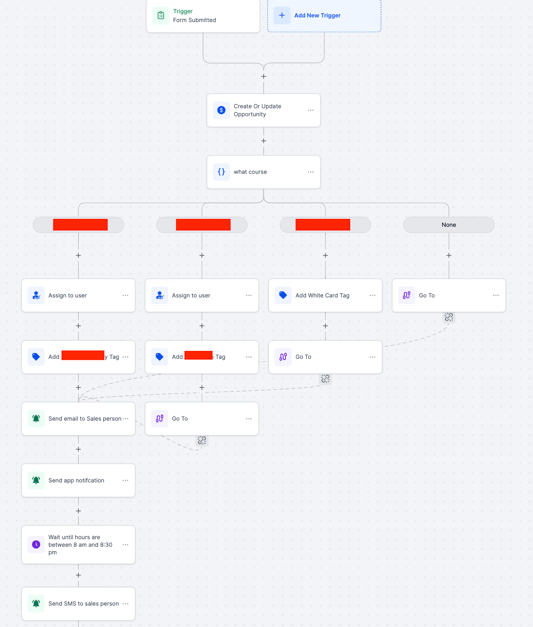

Here's what my clients say
”Amazing project management skills, too good on what she's doing, which I truly adore.”
- Henry R.
”Every day, they strive to improve their service to the clients by developing the right blend of technology and creativity to make sure every job done is done as efficiently as possible.”
- Brian Moten
”Every day, they strive to improve their service to the clients by developing the right blend of technology and creativity to make sure every job done is done as efficiently as possible.”
- Joyce Gould
Contact me today

